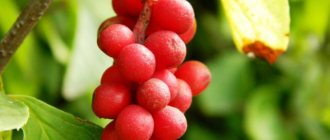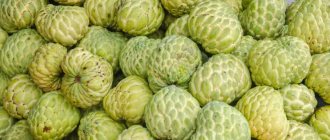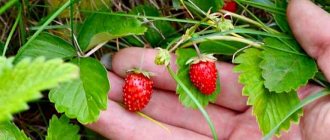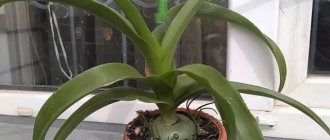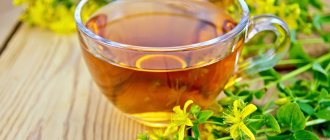A tincture from the leaves of a perennial ornamental plant is a time-tested remedy for the treatment of chronic joint diseases. It is used to eliminate pain and swelling in joints due to arthritis, arthrosis, osteochondrosis of any localization. Course use of tinctures helps improve blood supply to damaged cartilage and bone tissues, ligaments and tendons. The burning juice of the caudate bird has a distracting, local anesthetic and powerful anti-inflammatory effect.
Characteristic features of a medicinal plant
The most important ingredient in the chemical composition of the plant's leaves is the alkaloid colchicine. Due to its pronounced warming effect, blood circulation improves in damaged joints. The use of tincture has a positive effect on the blood supply to damaged tissues with nutrients and biologically active substances, molecular oxygen. Poultry leaves also contain other useful chemical compounds:
- bioflavonoids;
- phytoncides;
- organic acids;
- mucus and tannins;
- essential oils;
- microelements - zinc, magnesium, potassium, copper, molybdenum, phosphorus, calcium;
- fat- and water-soluble vitamins.
Wild poultry grass is found in the subtropical zones of Asia, Africa, and the southern regions of Europe. In our country, it has become widespread due to its high decorative value and low maintenance requirements. And then the ability of Chinese onions to improve the condition of joints that had undergone destructive and degenerative changes was established.
The useful plant has found application not only in folk, but also in official medicine. Hell root extract (another name for poultry plant) is included in some dietary supplements produced in the form of ointments, gels, and balms.
The appearance of the Chinese onion is quite unusual. Part of a very large fleshy bulb, sometimes exceeding 8 cm in diameter, rises above the ground surface. The leaves of the plant are long, thin, and pointed at the ends. In mid-autumn, Chinese onions throw out powerful arrows, strewn with small, inconspicuous flowers with a pungent onion smell. It was during this period that the maximum amount of biologically active substances accumulated in the leaves. The most useful medicinal tincture is obtained from such plant raw materials.
| Substances from the chemical composition of Chinese onions | Pharmacological action and medicinal properties of ingredients |
| Alkaloid colchicine | Eliminates pain and swelling, increases range of motion in joints |
| Bioflavonoids | Improve blood circulation and supply of affected joints with nutrients and biologically active substances |
| Organic acids | Accelerate the removal of inflammatory process products and tissue breakdown from joints |
| Vitamins and microelements | Prevents the spread of pathology to healthy articular and extra-articular structures |
Description and origin of Chinese onion
Chinese onions are also called Indian and even Mongolian onions. There is another name - the tailed birdbird.
This is a perennial plant belonging to the Liliaceae family. Thin leaves emerge from its bulb, curling into tubes at the ends. White-green flowers grow on the peduncle. Each peduncle reaches up to 60 cm and contains about a hundred flowers. The latter tend to bloom from bottom to top. When they all bloom, the process of seed ripening begins.
South Africa is considered the birthplace of the Chinese onion, although the plant was discovered in South America, and then in other countries of the world located in warm climate zones.
Today, the natural habitat of the caudate bird is the territories of Eastern Europe, the Mediterranean, and Asia.
Chinese onions were brought to Russia (initially to Siberia) from China, as you can guess from the name of the plant. It was used for medicinal purposes, as the plant had a rich composition. It contains organic acids, amino acids and trace elements, as well as essential oils.
Note! Chinese onions contain alkaloids, which are strong poisons. That is why it is considered a poisonous plant.
The most powerful alkaloid in Ornithischium caudate is colchicine. This substance, however, helps reduce the severity of the inflammatory process, relieves pain and acts as a prophylactic against the deposition of uric acid salts in tissues.
Despite the fact that the plant is poisonous, its use is not prohibited. The main thing is to use it wisely.
Growing Chinese onions at home is quite easy; it does not require special conditions for this - ceramic pots, which are expensive, or specific conditions such as artificial heating. Indian onion leaves and bulbs can be used at any time as they are not seasonal.
Pharmacological action and medicinal properties
The therapeutic effect of Chinese onion tinctures is based on the pharmacological properties of substances from its chemical composition. Almost all biologically active compounds improve the functioning of the human musculoskeletal system. Useful substances complement each other’s therapeutic effects, enhance and prolong them. The following clinical activity is characteristic of medicinal tinctures:
- anti-inflammatory . Alkaloids, even in small doses, inhibit the enzyme responsible for the production of prostaglandins - mediators of pain, swelling and inflammation;
- anti-gout. Course use of the tincture helps remove tophi - crystals formed from uric acid salts - from joints;
- distracting and locally irritating . The folk remedy is characterized by an immediate analgesic effect due to increased sensitivity of nerve endings located in the subcutaneous tissue;
- antimicrobial. Traditional healers recommend a burning remedy for people with pathologies of infectious origin. It has antibacterial, antimycotic and mild antiviral properties;
- decongestant _ Substances from the chemical composition of Indian onions normalize microcirculation in the periarticular soft tissues. They prevent the migration of macrophages and neutrophils to foci of the inflammatory process;
- cleansing. Tannins and mucus have the ability to bind and remove toxic products of inflammation and tissue decay from joint structures.
Tinctures of a perennial plant are used to treat joint diseases of any severity. Regularly rubbing these products into the joint area helps eliminate pain, morning swelling of the joints and stiffness of movement.
Extreme care should be taken when collecting leaves. Drops of clear viscous juice quickly appear on the slices. If it gets on the skin, then only prolonged rinsing with clean running water will help get rid of the itching and burning.
Miracle bow
Chinese onion is a plant with medicinal properties. Used to treat many ailments, including varicose veins. This effective medicinal plant came to us from China and is freely grown on windowsills at home. The plant is also known under the same name as ornithischium tailed.
Both the bulb and leaves are used for medicinal purposes. Chinese onions contain useful substances that can relieve many diseases: amino acids, essential oils, organic acids and trace elements. The composition of this plant has not been fully studied, but it has been revealed that it also contains strong poisons.
Properties of Chinese onion:
- anti-inflammatory.
- painkiller.
- improves blood circulation and lymph flow.
- anti-gout.
- reducing blood clotting.
- antimicrobial.
If joints hurt, the juiciest and largest leaves are used for healing. As a rule, they are collected from November to December. During this period the plant blooms. Bulbs can also come in handy.
There are a lot of tincture recipes, and they are also very easy to prepare.
Take part of the thoroughly washed and crushed leaves into three parts of vodka. Infuses in darkness and warmth for ten days. A glass jar is used for tincture. The finished tincture will need to be strained.
You can also prepare a less concentrated composition. Everything is the same, only the ratio is one to ten. Sore joints can be lubricated with this tincture three times a day.
DETAILS: ACL surgery prices, ACL of the anterior cruciate ligament of the knee joint
You can also prepare a tincture for compresses. This recipe uses onions. Grind two large or five small heads, combine with 500 ml. vodka in a glass jar. Infuse in a dark and not very warm place for two to four weeks. You will need to stir the tincture, preferably every other day.
Treatment options
There are other equally effective treatment methods.
Chinese onion with eucalyptus oil
Chop a couple of Chinese onion leaves and add 20 g of any oil. Pour all 50 g of medical alcohol. Place the resulting mass in a bottle and close tightly. Keep in a dark place for a week, shaking well every day. Treatment of joints will become more effective if the lubricated area is wrapped in woolen cloth.
Compresses with camphor oil
Grind a couple of leaves of the plant and mix with 150 ml. alcohol and close the lid tightly. Mix 30 ml separately. camphor oil with 150 ml. alcohol After two hours, combine everything and put it in a dark place for two weeks. As soon as the tincture is prepared, you will need to strain it. Apply the medicine to a bandage or any cloth and apply it to the sore joint. After that, be sure to wrap this place with woolen cloth. This tincture is ideal for periods when joint disease worsens.
Ointment recipe with Vaseline added
You will need freshly squeezed juice from Chinese onions and Vaseline in a ratio of 1:5. First, melt the Vaseline in a water bath, then slowly pour in the juice. The resulting composition is mixed well and kept in the refrigerator. It will be enough just to apply the ointment to the area of skin where the sore joint is located. The ointment can not be washed off and kept on the skin for a long time.
Ointment containing egg white
This type of medicine should not be made in large quantities, as it quickly deteriorates. In 30 ml. Add three egg whites to the finished tincture of leaves and mix thoroughly. Rub the resulting medicinal ointment onto sore joints. Be sure to add woolen fabric for insulation. Leave for 2 hours, then rinse and cover the sore spot again.
Besides the fact that Chinese onion is very useful, it is also very poisonous. You should only touch it with rubber gloves. You need to be careful about getting the plant into your mouth and mucous membranes. Chinese onions require an extremely careful attitude.
Before you start using this plant for healing purposes, you need to carry out a small procedure by which you can determine whether it is worth starting treatment or not. To do this, drop a small amount of juice onto the bend of your elbow. If the skin turns red, treatment is not suitable for you.
During treatment, symptoms such as itching and burning may occur. It is necessary to wash off the medicine and lubricate the affected area with any oil. In case of contact with eyes, rinse thoroughly with running water.
Contraindications:
- pregnancy.
- individual intolerance.
- hemophilia.
Chinese onion is recognized as the best medicine in folk medicine for treating joints. If used correctly and carefully, it is completely harmless and, as practice has shown, is very effective. The plant can replace medications that have many contraindications. However, before you start using it, consult your doctor.
Indications for use
Tinctures based on ornithischium caudate are used to treat joint diseases of any etiology. These can be pathologies provoked by both the inflammatory process and destructive changes in tissues. The greatest therapeutic effectiveness of tinctures appears in the initial stages of the disease. But they help eliminate the symptoms of pathologies even with already developed complications. Indications for the use of a burning agent are:
- spondyloarthrosis;
- coxarthrosis;
- gonarthrosis;
- gouty, rheumatoid arthritis;
- thoracic, cervical, lumbar osteochondrosis;
- intervertebral hernia;
- tendonitis and tendovaginitis.
It should be remembered that the use of poultry tinctures does not cancel the course of taking non-steroidal anti-inflammatory drugs and chondroprotectors. It is necessary to inform a rheumatologist, vertebrologist or orthopedist about the use of a folk remedy. There is a high probability that the doctor will reduce the dosage of drugs, which often exhibit significant side effects.
In a room with a tailed poultry bird, there are very few fungal spores and pathogenic bacteria in the air space. During growth, Chinese onions release phytoncides that can destroy pathogenic microorganisms. Therefore, traditional healers recommend keeping poultry plant on their windowsills for people prone to frequent respiratory infections.
Cooking options
From an onion
Grind and then mix with vodka, keeping the proportions one to three. Pour the mixture into a wide-necked bottle or jar. Place the container with the concentrated liquid in a closet and store for a month, then strain the tincture through a sieve or cheesecloth in several layers. The remaining time is stored in the refrigerator.
Make sure that the container is not exposed to sunlight. This may cause the content to become unusable.
From leaves
Wash the leaves thoroughly, then dry and chop. Place in a wide-necked jar. Pour one part with three parts of alcohol and let stand for 10–12 days.
Don't miss: Leeches for arthrosis - an alternative to injections with complex action
Less concentrated infusion
The concentration is not made so strong to try how the drug will work, since there is a danger of getting burns. The solution is made according to the same principle as the first two, however, the proportions are taken not one to three, but one to ten. All other rules are followed - it is stored in a dark cabinet for 10 days to a month, then filtered through two layers of gauze.
It is better to start lubricating the sore spots with a weak concentration of liquid to protect yourself from burns. If side effects do not appear and the result is visible, then next time use a saturated liquid.
Contraindications and side effects
Chinese onion juice is a common cause of allergic reactions in gardeners. During growth, poultry leaves very often dry out at the ends, even with high air humidity. To increase the decorative appearance of the bush, flower growers cut off the darkened areas. If a person is hypersensitive to colchicine, then even a microscopic dose of the juice will cause burning pain, redness and swelling of the skin. After a few minutes, rashes may appear on the dermis. In this case, the skin must be washed with water, take a tablet of any antihistamine (Claritin, Loratadine, Suprastin) and consult a doctor.
Chinese onion tinctures are strictly forbidden to be used during pregnancy and breastfeeding. They are not used in the treatment of children under 18 years of age, with hematopoietic disorders, including poor blood clotting.
Contraindications
It is also worth taking into account that some people have an individual intolerance to this plant, which is a contraindication to the use of tinctures and ointments from it, so you must first determine whether you are one of such people. To do this, mash the leaf of the plant and apply its juice to the elbow joint. Redness of the skin is a symptom of intolerance to the juice of this plant. To identify plant intolerance, just take a few drops of its juice.
If the skin reacts normally during the tolerance test, but symptoms such as itching, allergies, rashes or redness appear during treatment, then you should not use products made from Chinese onions. If redness on the skin, rash or other reactions appear, treat the affected area with any oil. Sea buckthorn oil is best.
Proper preparation of tinctures
Almost all recipes for Chinese onion tinctures for treating joints contain vodka or alcohol. Pharmacies sell 70% and 96% ethyl alcohol for external use. You should purchase the medicine without any dyes, flavors or preservatives. To prepare tinctures, you can use both fresh and dry, pre-collected leaves. All work must be carried out wearing medical gloves. Here are the most effective recipes for tinctures for joint pain and stiffness of movement:
- Cut 100 g of fresh leaves (6-7 pieces) into pieces 1-2 cm wide and lightly grind in a mortar until juice appears. Place the plant material in a container made of ceramic, porcelain or dark glass and pour in a liter of vodka or 90% ethyl alcohol diluted with water in a 1:1 ratio. Seal the container and place in a dark place for 2-3 weeks;
- Grind 10 dry leaves in a mortar to a powder and pour into a dark glass jar or bottle. Pour in a liter of vodka or 96% ethyl alcohol diluted with water in a ratio of 1:1. Leave in a dark place for 3-4 weeks. For better extraction of biologically active substances, the container must be shaken daily;
- Place 3 whole large leaves, 20 g of fleshy onion and a flower arrow, cut into small pieces, into a dark glass container. Pour in a liter of vodka or 96% ethyl alcohol diluted with water in a ratio of 1:1. Place the container in a cool, dark place for 1-1.5 months.
Tailed poultry can be infused not with vodka, but with vegetable oil. You can use sunflower, corn, olive. But the best medicine comes from flaxseed oil. Place fresh Chinese onion leaves in a bowl made of non-oxidizing material (glass, ceramics, clay). They need to completely fill the container, but do not compact it. Carefully pour in the vegetable oil down the side until it reaches the neck. Close the container with a lid and place in a dark place. Leave for 30 days, shaking occasionally.
To treat diseases of the musculoskeletal system, oil and alcohol tinctures are used 2-3 times a day. They are rubbed into the knees, lower back, neck, hip, elbow, and shoulder joints. Folk remedies can also be used in the form of compresses. To do this, moisten a sterile napkin in the tincture and apply it to the area of pain and inflammation for 1-2 hours.
No matter how effective folk remedies are, they should only be used as an auxiliary treatment. It does not replace taking pharmacological drugs - NSAIDs, glucocorticosteroids, chondroprotectors. The possibility of using Chinese onion tinctures and medications together should be discussed with your doctor.
Features of growing plants at home
- The location of the plant must be selected so that direct sunlight does not fall on it. For such a place, windows facing the northern part are quite suitable. Also, a pot of Chinese onions can be placed in the back of the room. In the hot season, it is advisable to take the plant out onto the balcony or veranda.
- A mixture consisting of garden soil and sand, taken in equal proportions, is suitable as soil. A few pieces of charcoal are also added here.
- This plant needs to be replanted infrequently - once every two or three years. It's better to do this in the spring.
- The optimal temperature for a poultry farmer in summer will be from +20 to +22 degrees, in winter – from +10 to +12.
- Watering should be moderate and carried out only after the soil has dried.
Who is the plant contraindicated for?
- Pregnancy and breastfeeding;
- Individual intolerance to the elements that make up the plant;
- Hemophilia.
If skin irritation occurs, you need to lubricate the affected area with any oil (sea buckthorn is ideal) and stop using the plant.
Did you like the article? Share:
Chinese or Indian onions also have other names; they are often referred to as brandushka and ornithischium tailed. It is a plant of the Liliaceae family - a beautifully flowering bulbous species.
